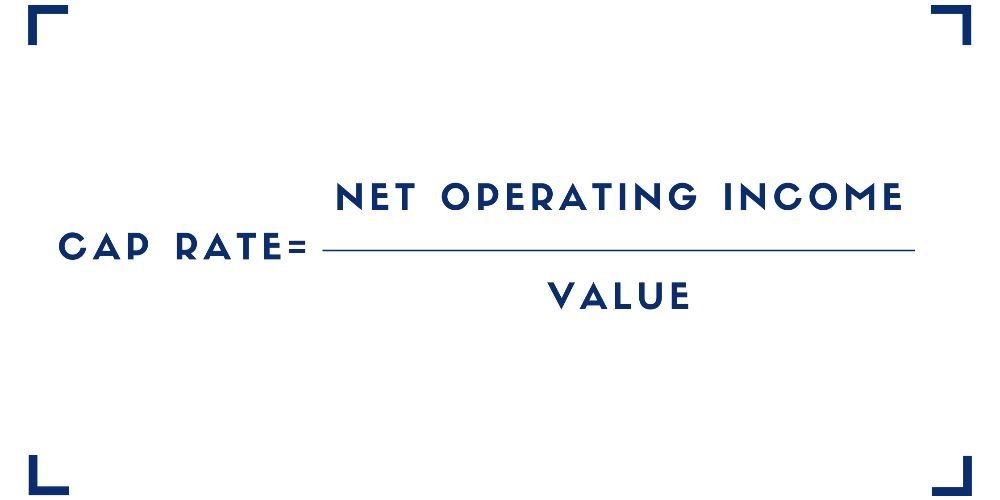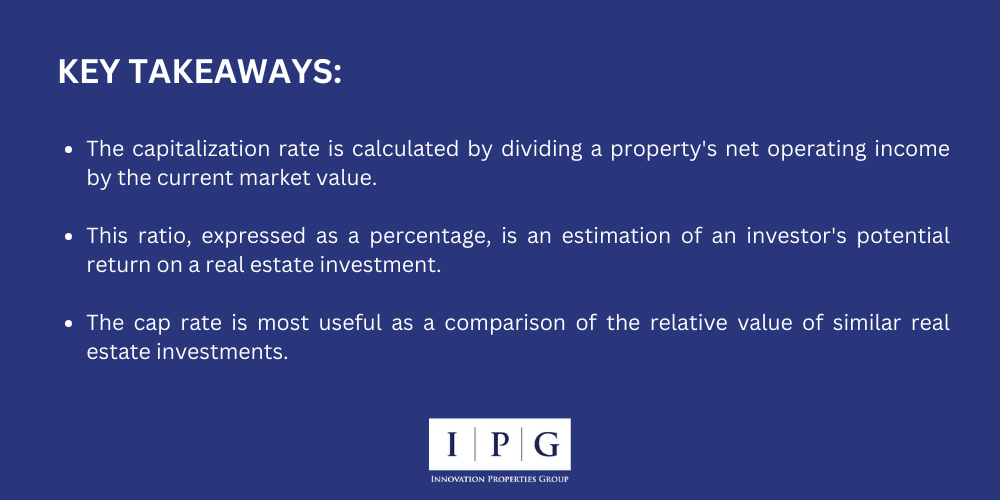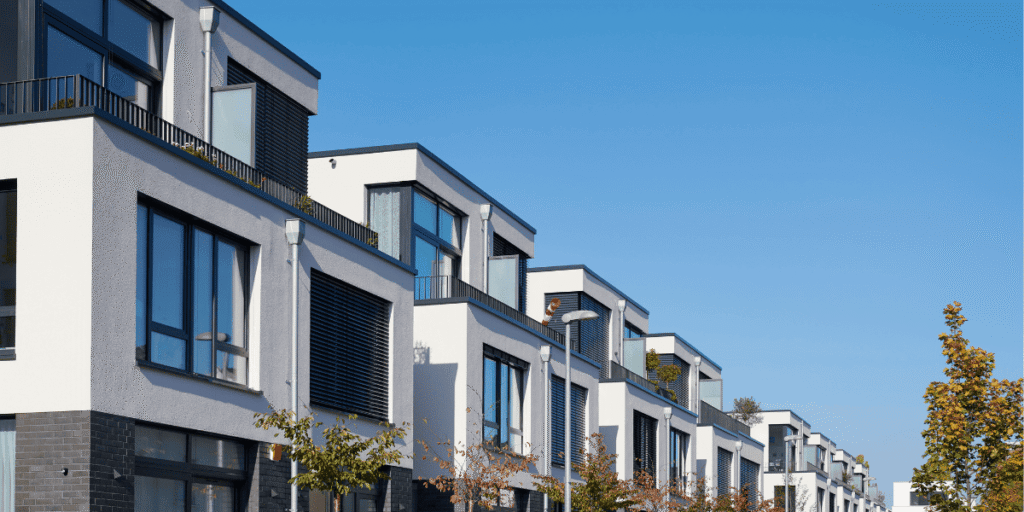Capitalization Rate: Cap Rate Definition, Formula and Examples

In real estate, the capitalization rate, known also as a cap rate, represents the percentage rate used to estimate the value of some investment property in the capitalization. The use of cape rate is to transform net operating income into a rental property’s market value.
Cap Rate Formula:

This capitalization rate formula is a way of indicating investment value and the expected return. For example, there is a greater demand for apartment buildings that have forced capitalization rates down, meaning higher prices for these investment properties.
Jump To:
What is Cap Rate?
The capitalization rate, or cap rate, is usually defined as the first year, stable, operating income, divided by the present value or the current purchase price. The cap rate is used to convert some property’s net operating income into the property’s investment value.
To understand how to calculate cap rate, let’s assume a rental property’s cap rate in a given market is 10%. With this information, we can determine the property’s income and cap rate returns. For example, if you invest $100,000 in the property, it will generate $10,000 of income at the end of the year.
This capitalization approach is the same concept used to calculate what an investment in a rental property should be.
Pros and Cons of Cap Rate Investment
The cap rate calculator is a convenient and quick method to determine if the value or purchase price of investment meets the investor’s criteria or even needs and wishes for the future.
However, the capitalization rate alone is not meant to be the sole reason for the purchase of some property. Proper due diligence and other factors actually determine if an investment is worth the risk. These factors are usually some of the following:
- Location
- Demographics
- Growth
- Supply vs demand
- Loan-to-value and
- Debt coverage ratios
On the other side, calculating the cap rate comes with some disadvantages. The main downside in using the cap rate calculator to analyze an investment property is that the cap rate only shows the first-year stabilized net value of the operating income for a property.
The cap rate has an inverse relationship to value, so if the property’s operating costs change in the future years, the cap rate changes and therefore its value.
The Capitalization Rate Formula Calculator
Determining cap rate can be done by dividing some property’s net operating income by the price asked or the price offered. These rates can vary for each seller and buyer. For a buyer to find the value and the maximum price of a property, he needs data on the property:
- Gross operating income (GOI) – the annual rent fees directly received from tenants and the rent amounts for unoccupied units (local demographic trends, population density, and personal income influence rental income);
- Operating expenses (taxes, insurance, maintenance, repairs/replacements, and all other management costs) – information that helps anticipate expenses
- The capitalization rate – the buyer is advised to evaluate the property’s type and condition.
GOI – operating expenses = NOI (net operating income). The NOI establishes a return of capital invested (mortgage and equity financing) to purchase and renovate the property (this is also referred to as the recovery of invested capital allocated to improvements) and return gains on capital invested (the taxable part).
The cap rate provided by the seller’s agent arranges the rate of return (cap rate) – usually acceptable to maintain some property in the future. Only when the buyer sets a satisfactory capitalization rate, can the maximum value acquired be calculated (and only if they have a documented NOI).
The Cap Rate At Reversion & The Entry Cap Rate
The capitalization rate is used to assess rental properties. This means that during the life of an investment, the cap rate establishes the value of a purchased or sold property.
When examining the return of an investment over time, all the cash flow of the property is taken into consideration to calculate the total return. The capital considered is the outflow when the investor has purchased the property, and the cash he has received upon the property is sold.
The going-in cap rate is the capitalization rate used to define the value of the property when the investor acquires some real estate. Since the investor is entering the investment, can also be referred to as the entry cap rate.
The going-out cap rate is the capitalization rate used to specify the value of the investment upon its conclusion. Considering the investor is exiting the investment, this cap rate is known as the exit cap rate.
The reversible cap rate is compatible with the exit cap rate, or the cap rate going out. It is a reversed cap rate because it is used at the sale of the investment when the gains return back to the investor.
Going in Cap Rate and Exit Cap Rate
The “going-in cap rate“ refers to the ratio of a property’s projected first-year net operating income to its purchase price. This rate is used to assess the initial profitability and return on investment of a property at the time of purchase.
On the other hand, the “exit cap rate,” also known as the terminal capitalization rate, is used to estimate the potential resale value of the property at the end of the holding period.

When to Use Cap Rate? (And When Not to)
The cap rate is an invaluable and widely used metric in the commercial real estate sector, offering practical insights in various scenarios. For instance, it serves as a quick and effective tool for evaluating potential acquisitions in comparison to other investment opportunities. A direct comparison, such as a 5% cap rate acquisition versus a 10% cap rate acquisition for similar properties in similar locations, instantly highlights the differing risk profiles of these investments.
Cap rates also prove their worth when analyzed as trends. By examining cap rate trends over recent years within a specific submarket, you can gain valuable insights into the market’s direction. For example, if cap rates are trending downward, it suggests that property values are rising, indicating a heated market. Predicting where values may go in the coming year becomes clearer when historical cap rate data is analyzed.
It’s essential to recognize the limitations of cap rates. While they are excellent for quick estimations, they should not be used indiscriminately. Cap rates are most effective when applied to a stabilized Net Operating Income (NOI) projection, where they can produce a valuation that closely aligns with the results of a more intricate discounted cash flow (DCF) analysis.
In cases where a property’s net operating income stream is intricate, irregular, or exhibits significant cash flow fluctuations, relying solely on a cap rate may not yield a credible or reliable valuation. In such instances, a comprehensive discounted cash flow analysis becomes imperative to ensure a more accurate assessment of the property’s worth. It’s crucial to choose the valuation method that aligns with the property’s specific financial dynamics for the most precise and informed decision-making.
Multiple Steps of Valuation
Valuing commercial real estate is a complex process that involves various tools and methodologies. While there are simpler approaches to begin with, such as the cap rate analysis, it’s crucial to understand its limitations. The cap rate can provide a quick snapshot of a property’s potential, but it doesn’t account for critical factors like irregular cash flows.
To get a more comprehensive and accurate valuation, it’s essential to employ a multi-period cash flow projection. This method takes into consideration the fluctuations in cash flow over time, providing a more nuanced understanding of a property’s financial performance.
If you find this process complex or require expert guidance, our team of professionals is here to assist you. Don’t hesitate to reach out to us for personalized support and insights tailored to your specific real estate valuation needs. Your investment decisions deserve the precision and expertise that we offer.
FAQ
- What is Capitalization Rate in Real Estate?
- Capitalization Rate, or “Cap Rate,” is a key real estate metric used to assess the potential return on an investment property. It is calculated by dividing a property’s annual net operating income by its current market value or purchase price. This rate helps investors compare returns across properties and gauge investment risks. A higher Cap Rate often indicates a higher potential return and risk, while a lower Cap Rate suggests lower risk and return.
- How is Capitalization Rate Calculated?
- Capitalization Rate is calculated by dividing a property’s annual net operating income (NOI) by its current market value or purchase price. The formula is:Capitalization Rate = Net Operating Income / Current Market ValueThis calculation provides the expected rate of return on a real estate investment.
- What is a Good Capitalization Rate in Real Estate?
- A “good” capitalization rate in real estate varies by market and investment goals, but typically, a rate between 4% to 10% is considered favorable. Higher rates may indicate higher returns and potentially higher risk, while lower rates can suggest lower risk and return. Investors should consider local market conditions and their risk tolerance when evaluating what constitutes a good cap rate for them.
- Can Capitalization Rate Indicate Market Trends?
- Yes, capitalization rates can indicate market trends. Rising cap rates may suggest a cooling market or higher perceived risk, while falling cap rates often point to a heating market with lower risk. They provide insights into market conditions and investor expectations.
- The Capitalization Process Uses a Capitalization Rate, Which Is Based on What?
- The capitalization rate in the capitalization process is based on the risk of the investment, expected return, and prevailing market interest rates. It reflects the investor’s required rate of return and the property’s income-generating potential.




